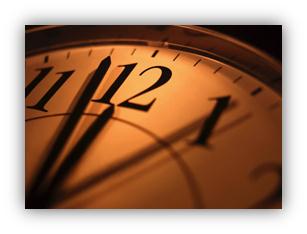Take Back Your Time
 Feeling harried? The latest edition of Faculty Focus encourages you to take back your time.
Feeling harried? The latest edition of Faculty Focus encourages you to take back your time.
We know that humans don’t multitask. Instead, we switch from one task to another, and in the process we lose time during that switch as we try to refocus. The author suggests scheduling “like with like”. Do similar tasks together to minimize losing time to refocus.
The author also suggests scheduling your tasks. Block time off in your calendar to get stuff done. During that time, focus on that task. Sometimes we get so caught up in being available for our students we forget to take care of ourselves. It’s your time. You can use it however you’d like.
I was just talking with a colleague, Kaddee L., who has decided that she doesn’t need work email sent to her phone between 6pm and 8am on weekdays or at all on weekends. Walking around with our work email being delivered to us 24/7 wherever we might be makes it hard to let our brains take a break from work. Taking a page from Kaddee’s book, I just turned off push notification to my phone during those times. (Android users: Check out the email program Touchdown; $20, but worth it. Thanks to Rich B. that tip!)
Having a hard time turning away from your email? You know what? It’s not life or death. It’s just education. Email can wait.
Are you frequently distracted by email? It’s okay to close your email program while you work on that concentration-heavy task. Really, it’s okay.
The author also suggests zipping through email quickly. Read a message and decide what to do with it. Delete it if it’s not relevant to you. If you think it might be at some future point, file it away. Reply if a reply is warranted. (Another colleague, Ruth F., finds the conversation view in Outlook very helpful. On Outlook’s ‘View’ tab, check ‘Show as Conversations.’ Click on ‘Conversation Settings’ to tweak how it looks. Try different combinations until you find the one that works for you.)
If a particular email is not something you want to deal with right now, there are a number of options for getting it out of your inbox so you can focus only on what needs to be dealt with now.
Outlook: Use the follow-up feature in Outlook to be pinged with a reminder. There are standard times, but you can also customize for any date or time.
Followup.cc: Forward the message to, say, tomorrow@followup.cc, and tomorrow morning at 7am, followup.cc will send you that message back. (No attachments, though.) Nothing special about ‘tomorrow.’ Choose any future date or time. Still not ready for it? Click the embedded snooze link for the time you want to see it again. (See this blog post for more info: http://suefrantz.com/2010/12/10/followup-cc-remind-yourself/)
Simplyfile: This is a little program that integrates with Outlook. It lets you quickly file email messages into folders. By quickly, I mean one mouse click or one keyboard shortcut. It also has a “snooze it” function. Any message you ‘snooze’ gets dropped into a ‘snooze’ folder. You assign a date and time for that message to be returned to your inbox. It will reappear at the date and time if was originally from, so only use this if you can keep your inbox uncluttered. (See this blog post for more info: http://suefrantz.com/2009/08/11/simplyfile-an-outlook-addin/)
One last bit of psychological research for productivity. Minimize barriers. Whatever you want to get done, remove as many barriers as you can between you and the task. If I need to grade electronic assignments, I open them on my computer. Even if I don’t grade them then, they will be ready to go when the mood strikes. Want to go to the gym tomorrow? Pack up your stuff and set it by the front door the night before. It works the other way, too. Want to reduce the amount that you snack? Put the snacks in the back of a cupboard – in the garage – of your friend – who lives on the other side of town.
Now, take a deep breath. Close your email. And get to work on that project that’s been nagging you.